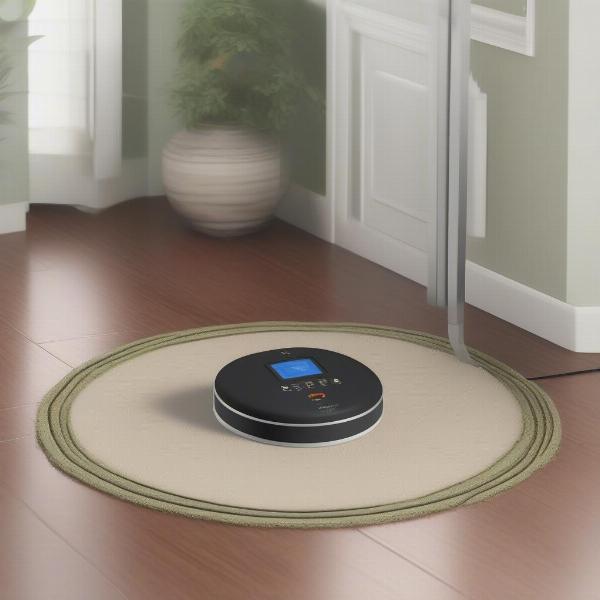Electric fences for dogs can be a controversial topic, sparking debates about safety and effectiveness. However, when used correctly, they can be a valuable tool for containing your furry friend and keeping them safe. This comprehensive guide will explore everything you need to know about dog electric fences, from the different types available to the training process and important safety considerations.
Types of Dog Electric Fences
Choosing the right type of electric fence depends on your individual needs and the layout of your property. The most common types include:
-
Wireless fences: These systems create a circular boundary around a central transmitter placed inside your home. They are relatively easy to install but can be less precise than wired systems and may be affected by metallic objects or terrain variations.
-
In-ground fences: These fences involve burying a wire around the perimeter of your designated area. This provides a more reliable and customizable boundary, allowing you to create specific shapes and exclude areas like gardens or pools.
-
Above-ground fences: This type uses wire strung along existing fencing or posts. It’s a visible boundary that can be easily moved or adjusted, making it a suitable option for renters or those with temporary containment needs.
 Setting up a wireless dog fence
Setting up a wireless dog fence
How Dog Electric Fences Work
Most dog electric fences operate on a similar principle: A transmitter sends a radio signal through a wire or wirelessly. Your dog wears a receiver collar that beeps when they approach the boundary. If they continue to cross the boundary, the collar delivers a mild static correction. This correction is not meant to be painful but rather a startling sensation that discourages them from crossing.
Training Your Dog with an Electric Fence
Proper training is crucial for the success and safety of using an electric fence. Start by flagging the boundary line with brightly colored flags. Introduce your dog to the collar gradually, allowing them to acclimate to the beeping sound. Walk them along the boundary, reinforcing positive behavior when they retreat from the flags after hearing the beep. Over time, they will learn to associate the beep with the boundary and avoid crossing it.
Safety Considerations for Dog Electric Fences
While generally safe, electric fences come with some safety considerations:
-
Proper collar fit: Ensure the collar fits snugly but not too tight to avoid discomfort or injury.
-
Supervision: Always supervise your dog during initial training and periodically thereafter.
-
Terrain and interference: Be mindful of terrain variations and metallic objects that may interfere with the signal.
-
Other animals: The fence will not deter other animals from entering your property.
-
Temperament: Electric fences may not be suitable for all dogs, especially those with aggressive or anxious tendencies.
Choosing the Right Electric Fence for Your Dog
Consider the following factors when selecting an electric fence:
-
Size of your property: Wireless systems are generally better suited for smaller properties, while in-ground systems are more flexible for larger or irregularly shaped areas.
-
Dog’s temperament and size: Choose a system with adjustable correction levels to suit your dog’s individual needs.
-
Budget: Wireless systems are typically less expensive than in-ground systems.
-
Local regulations: Check for any local regulations regarding electric fence usage.
Conclusion
Dog electric fences can be an effective containment solution when used responsibly and with proper training. By carefully considering the different types available, understanding how they work, and prioritizing your dog’s safety, you can make an informed decision about whether an electric fence is the right choice for you and your furry companion. Remember, proper training and consistent reinforcement are key to success.
FAQ
- Are electric fences cruel? When used and installed correctly, electric fences deliver a mild static correction that is more startling than painful. Proper training is essential to ensure your dog’s well-being.
- Will my dog run away if the power goes out? Some systems have battery backups, but it’s important to have a backup plan in case of power outages.
- Can I use an electric fence with multiple dogs? Yes, you can, but each dog will need its own receiver collar.
- How much does a dog electric fence cost? The cost varies depending on the type of system and the size of your property.
- Can I install an electric fence myself? While some systems are designed for DIY installation, professional installation is recommended for in-ground systems.
- Will the fence keep other animals out? No, the fence only deters the dog wearing the receiver collar.
- Can I use an electric fence with a puppy? Most manufacturers recommend waiting until a puppy is at least six months old before using an electric fence.
electric fence and dogs
indoor electric fence for dog
above ground electric fence for dogs
indoor electric dog fence
About ILM Dog: ILM Dog is your premier online resource for all things dog-related. We provide expert advice on dog breeds, health, training, nutrition, grooming, and much more. From puppy care to senior dog support, we’re here to help you navigate every stage of your dog’s life. Contact us today for personalized advice and support! Email: [email protected], Phone: +44 20-3965-8624.